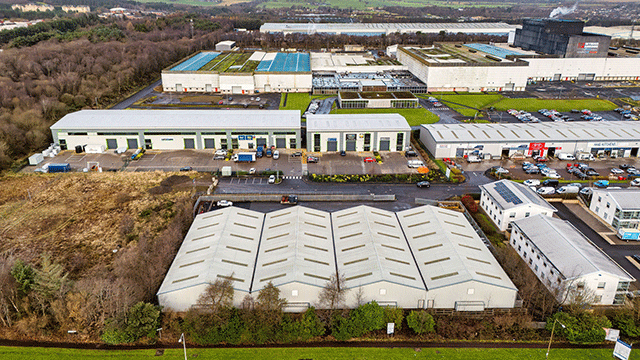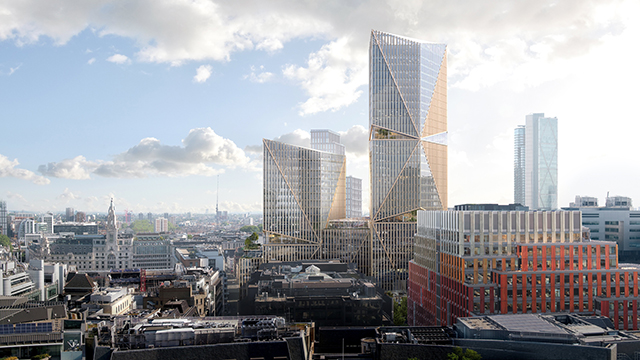It’s first thing in the morning and there’s a distinct buzz of activity in the reception at Waverley Court. Edinburgh council’s well-located modern offices sit just a season ticket’s throw from Waverley railway station. And they are one of the shiniest feathers in the cap of the council’s head of property, Peter Watton, who brokered the deal that saw the council take ownership of the 194,000 sq ft block from Aviva in exchange for £86m back in 2008. A hefty sum then, although Watton reckons that the purchase will save the local authority £33m over a 20-year period.
The property’s central location may bring added benefits, too. Watton recalls an agent recently suggesting that Waverley Court’s reception at 10am is one of the city’s best networking spots. Ironically, that may not be true for Watton himself, who was promoted to his current role last Christmas, almost exactly a year after he stepped into the post of real estate manager.
The softly-spoken Ulsterman, originally responsible for a team of 66, suddenly became responsible for 2,500 staff. Understandably, he now has little time for chatting in office receptions.
CV
Born July 1966, Northern Ireland
Higher Education BSc (Hons) Estate Management, University of Ulster; RICS, Register Valuer
Career 2010-12 Head of property development, EDI Group
2012-13 Estate manager, City of Edinburgh council
2013-present Head of corporate property, City of Edinburgh council
Lifestyle Married, with three boys aged 3, 6 and 9. Spare time: “I don’t have any.” Outside of work, there are patriotic divisions within the Watton family when it comes to rugby, as Peter retains an allegiance with Ireland, while his three sons root for Scotland and his American wife cheers on the US. Expect friendly rivalry for next year’s World Cup, then.
Neither is the father of three a regular face at property industry events. He has kept his head down since he stepped into the shoes of predecessor Dave Anderson, who resigned from the council after being suspended in 2012 during a council investigation into irregularities with the city’s property repairs division. No charges were brought against Anderson, who was a popular and respected figure in the city’s property fraternity. The council praised his “entrepreneurial” abilities and local agents speak highly of his business-like approach to property matters. It is this legacy that Watton appears keen to continue.
“All I’ve sought to do is bring a commercial slant to estate services. It’s not rocket science,” he says, but it has taken time to turn his department into what he calls a commercial machine.
“I gave staff responsibility, then empowered them, then gave them accountability,” he says. “They’ve generally responded well – many are ex-private sector, so the principles we’re dealing with are not new to many of them. The whole approach is collegiate. You have to take the team with you. I spoke to each of them individually before we made changes.”
Ensuring his troops are well briefed is important for Watton as the city council is a major player in Edinburgh property (see box). “My key task is to deliver capital [from sales] and revenue [from the existing portfolio],” he says.
And he repeatedly mentions his desire to crystallise the value of council assets. “That means you look at every property, put it through the mangle and then put it through again, so you squeeze everything you can out of it,” he says.
So far, the approach is working well, with a healthy performance from both asset management and capital revenue perspectives. Watton’s target was to increase asset income, based on a rent roll of £11.2m, by 2% per annum over the five years to 2017. Two years in and he calculates a total increase of 14%, having boosted the annual rent roll to £12.7m.
Now in a rising market, the money coming into the coffers is likely to climb further. A rent review on a retail unit on the Royal Mile recently broke the city’s zone A ceiling, achieving £109 per sq ft. Rent-free periods are finishing at Atria, the 200,000 sq ft office scheme next to the city’s International Conference Centre, speculatively developed by the council in 2013, and substantial uplifts from rent reviews on other city-owned office properties are expected over the next couple of years.
Additional cash is likely to roll in from advertising sites – the 61 spots across the city could raise £250,000 a year and the final pounds are coming in from rating appeals. The last appeal was concluded recently, after liabilities were contested on every one of the council’s properties, resulting in a real-term saving of £10m for the local authority.
The development side of things may prove more challenging, but Watton isn’t fazed by his target of making £70m through capital transactions. “We can’t raise that amount by the traditional means of sticking up a ‘for sale’ sign,” he says. “We’ll do an option appraisal and then offer a wide range of options.”
He cites the recent case of land sold at South Gyle to volume house builders. By introducing two closing dates for bids, the council ratcheted up the original valuation of £6m to achieve £11.7m. “It’s all about minimising cost and increasing value,” says Watton.
Two years in and he is confident of not only meeting his capital receipts target, but beating it by some margin. He estimates that total sales could add up to £123m – at present £16m is in the bank, £11m is expected from deals due to complete this summer and a further £18m could come in by the year-end.
Bargain hunters may have to look elsewhere, however. Watton is adamant there will be no fire sales and is coy about the future of Atria, where 80,000
sq ft remains to be let. “We’ll take advice from Montagu Evans and JLL [Atria’s letting agents], but we’re not being pressured to sell as the rent services the debt, so it’s cost-neutral for us,” he says.
Nevertheless, he agrees a sale within the next couple of years is likely.
In the meantime, Watton is likely to be busy with major projects like Fountain Quay and St James Quarter (see box). Local commentators suggest that the forthcoming Scottish independence referendum has had little impact on the investors’ willingness to get involved in such projects. Watton says: “There has been no major effect. We have several major schemes on the go – doesn’t that speak for itself?”
St James Quarter
Work on the long-awaited redevelopment of Henderson’s 40-year-old 690,000 sq ft St James Centre in central Edinburgh may finally start next year. This spring, Henderson announced a tie-up with US pension fund TIAA-CREF to redevelop new retail and office space, plus hotels, leisure and residential units. The £850m St James Quarter scheme will include £61m from Edinburgh council and the Scottish government in what it calls a RAM (regeneration accelerator model), which is similar to a TIF. Watton says the first stage is putting together a CPO package covering around 40 individual interests.
Fountain Quay
The 8.5-acre former Scottish & Newcastle brewery site was going to be HBOS’s 1.1m sq ft HQ until the recession, when the council snapped it up for £13.8m. Now a £120m mixed-use scheme is planned and Watton says the draft masterplan, perhaps with 350 homes and 300,000 sq ft of offices, will be submitted soon. He says the density will be lower than in the HBOS plans.











